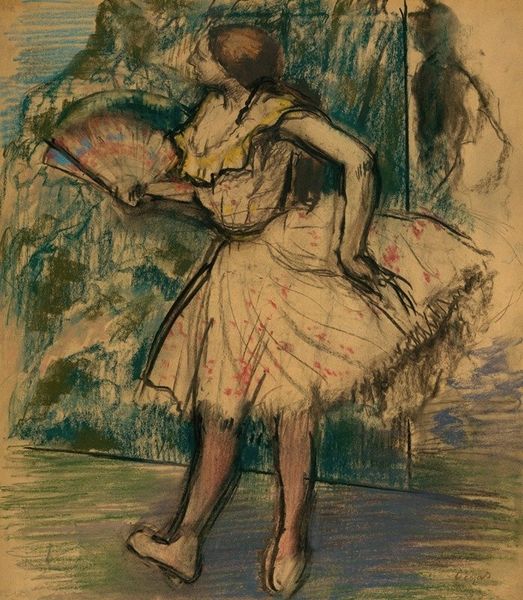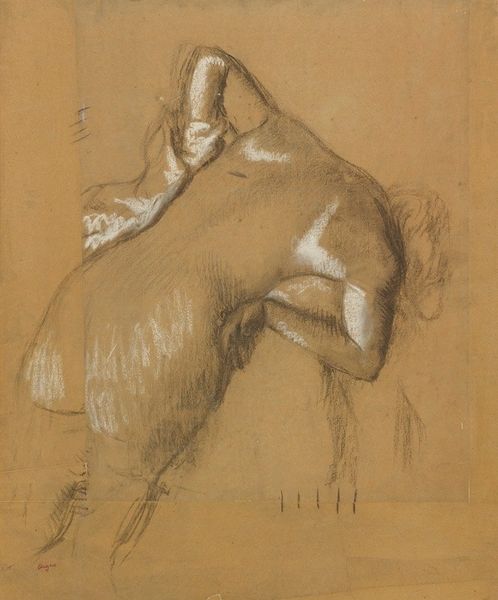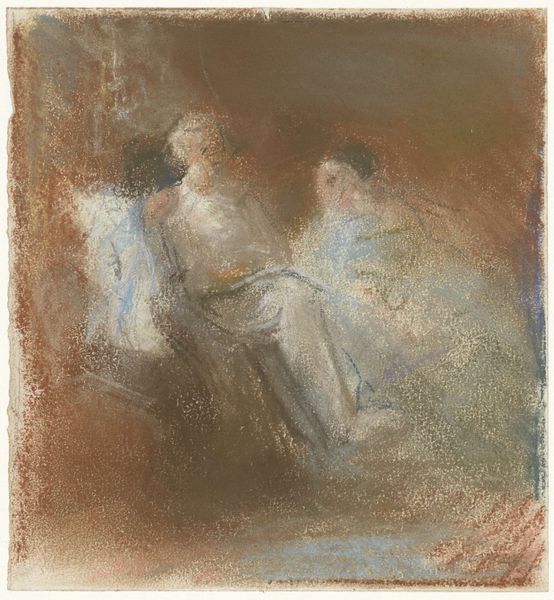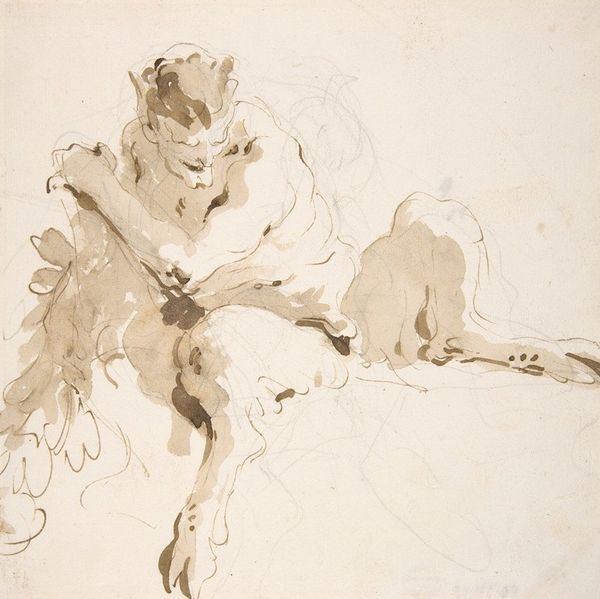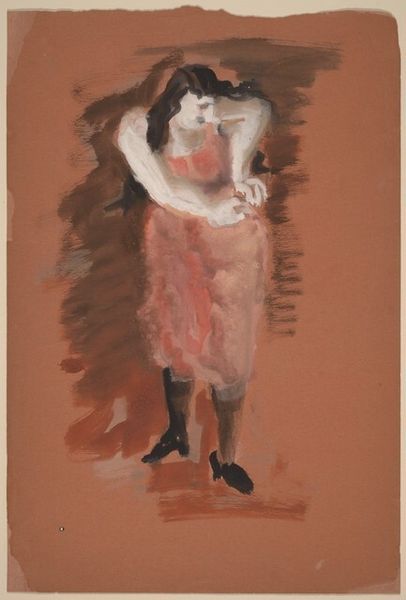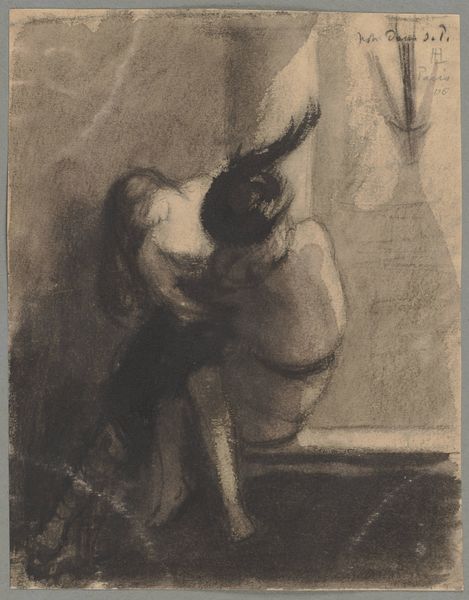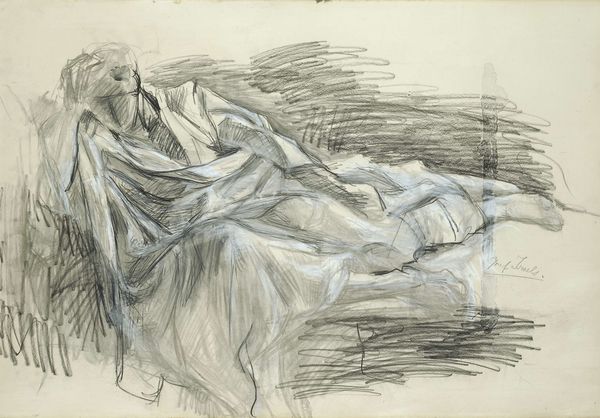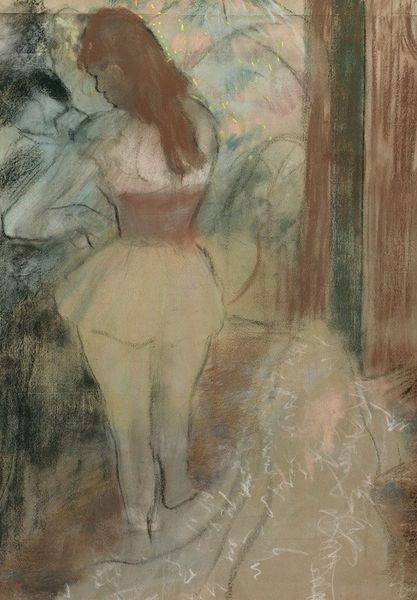
drawing, pastel
#
portrait
#
drawing
#
figurative
#
impressionism
#
figuration
#
possibly oil pastel
#
oil painting
#
intimism
#
portrait drawing
#
watercolour illustration
#
pastel
#
nude
#
watercolor
Copyright: Public Domain: Artvee
Editor: This is "Danseuse attachant son chausson," or "Dancer Tying Her Shoe," by Edgar Degas, created around 1887 using pastel. There's an intimacy to the piece; we’re catching a glimpse of a dancer in a private moment. What strikes you most when you look at this drawing? Curator: The bent-over posture of the dancer immediately recalls figures in mourning. Degas, through this posture, connects the fleeting image of a ballerina with the historical weight of grief, making it resonate with universal human experiences beyond the ballet stage. Consider the blue hues that almost shroud the top of her dress. What emotions or memories might that evoke in you? Editor: Blue often makes me think of calmness or sadness, almost like a veil, contrasting with the yellow lighting on the dancer’s back that creates a sense of warmth, maybe even vulnerability. Curator: Exactly! The choice of pastels and the layering of colours suggest more than just surface appearance. Think about the many connotations of dance as well – of rituals, sacrifices, transcendence through movement. Degas captures not just a dancer but embodies the historical echo of those archetypes. Editor: So the art isn't just in the dancer's form, but in these symbols we read into her pose and colours? Curator: Precisely. Degas invites us to unpack the cultural memory embedded within seemingly simple scenes. He freezes time and turns fleeting glimpses into reflections of shared human experiences, extending far beyond the depicted moment. Editor: That's really changed how I see it. Thanks, I never would have made those connections on my own! Curator: That’s the power of art, isn't it? Revealing what lies beneath the surface.
Comments
No comments
Be the first to comment and join the conversation on the ultimate creative platform.

